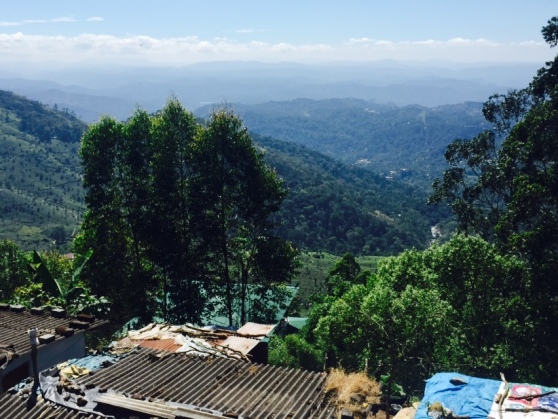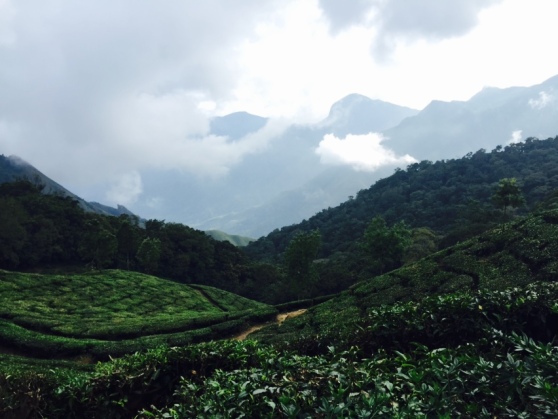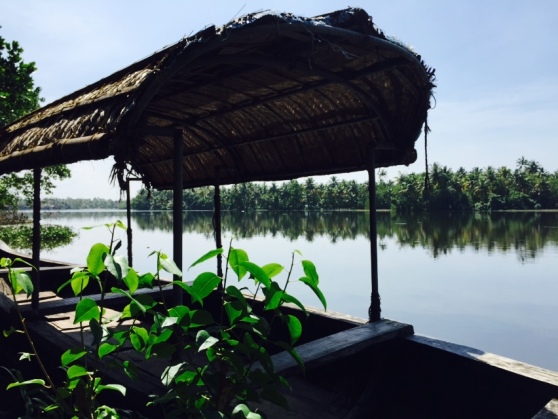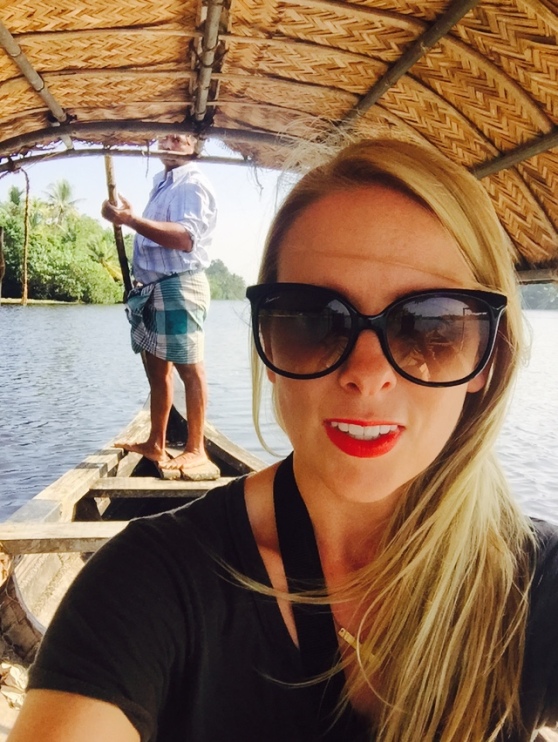And so it began. Three weeks in India to see as much variety as possible. I wanted to go to Kerala as it looked so lush, hot, blue, green and chilled out.
After flying in to Delhi, a fairly challenging journey from Delhi to Kerala ensued – it was not particularly challenging but the Indian factor made it so. Plane, taxi, ferry, taxi. “How long?” “One hour”. Six hours later…
Gods-own-country.com has provided me with much needed background on the state: Kerala is a state located in the south-west region of India on the Malabar coast. It was formed on 1 November 1956 per the States Reorganisation Act by combining various Malayalam-speaking regions. Spread over 38,863 km2 (15,005 sq mi) with a population of 33,387,677, it is bordered by Karnataka to the north and north east, Tamil Nadu to the east and south, and the Laccadive Sea to the west. Thiruvananthapuram is the state capital among the 14 districts; other major cities include Kochi and Kozhikode.
The region had been a prominent spice exporter from 3000 BCE to 3rd century. Later, in the 15th century, the lucrative spice trade attracted Portuguese traders to Kerala, and eventually paved the way for the European colonisation of the whole of India.
At a population of 34,000,000 the state has the lowest population growth rate; 3.44% and a density of 819 persons per km2. Kerala has the highest Human Development Index (HDI) in the country with 0.790 according to the Human Development Report 2011. It also has the highest literacy rate; 93.91%, the highest life expectancy; 74 years and the lowest sex ratio; 923 men per 1000 women among the Indian states. A survey in 2005 by Transparency International ranked it as the least corrupt state in the country. Kerala has witnessed significant emigration of its own people, especially to the Persian Gulf countries during the Kerala Gulf boom, and its economy depends significantly on remittances from a large Malayali expatriate community.
Hinduism is practised by the half of the population, followed by Islam and Christianity – it was surprising to see quite so many Catholic churches throughout our travels in the state. It is considered as the “cleanest state in India”, however, the morbidity rate is the highest. Culture of the state, which traces its roots from 3rd century, is a synthesis of Aryan and Dravidian cultures, developed and mixed for centuries, under influences from other parts of India and abroad.
After arriving in Fort Kochin by taxi late at night after a full days travel, we spent the first night in a homestay with a family who cooked us a local feast and provided us with a basic but fairly comfortable room for about £30, which is fairly expensive for a homestay. An average hotel would cost the same in the city, but we weren’t in a position to argue. In the morning we headed to Munnar by private car, through a company in Fort Kochin, called Stanley Tours who Id read about on tripadvisor.
Munnar was apparently wild and unexplored until a visit from British resident John Daniel Munro, who came to settle a border dispute between nearby Travancore and Madras, and he fell in love with the area. Munro had an interest in plantation and so visited the Poonjar family, who owned the region, and won the confidence and respect of the head of family in order to lease the land (for a nice wedge of cash).
Munro then formed the North Travencore Land Plantation & Agriculture Society in 1879 and began farming coffee and cardamom, among other things. These were soon abandoned when tea was found to be far more lucrative, the geography and altitude of the area were found to be the perfect conditions for tea.
In 1924 the various plantations of Munnar – including Munro’s – suffered a major monsoon, with catastrophic landslides leading to loss of property and life across the region.
In the 20th century, the plantations were discovered by tourists, who were taken by Hill Station, one of the highest peaks in the region with spectacular views of the surrounding countryside and plantations. The area still retains some charm, despite the numerous hotels and lodges, as well as hoards of domestic travellers and honeymooners, but it was more touristy than I had hoped.
We spent the day stopping off at local points of interest – valleys, waterfalls, tea plantations, scenic views, the Hill Station, and had a spot of lunch in a local restaurant, which cost about £1.50 for a traditional thali (selection of small dishes with rice).
We also visited to a local spice farm, which was more interesting than anticipated; a small farm with numerous herbs and spices freshly growing. The tour guide was really knowledgable in explaining what all the different spices were used for in traditional Indian medicine, it makes you question some forms of western medicine, which could be treated more naturally through an improved understanding of nutrition.
While in Munnar I had an unfortunate massage experience, which I have renamed ‘The Prison Masage’. I was expecting a firm and medical massage, targeting problem areas like my shoulders, but instead was told to strip naked in a brightly lit concrete room while a young girl stared at me, then sit on a chair while she aggressively massaged my head until I had a head ache. I was then made to lie down on a bed, first front down then back, while she swept her hands over me from top to bottom in one swift motion, for about 30 minutes, where she touched EVERYTHING. After that unpleasantness, I sat in a ‘steam bath’ which was like a box you sat in, with a hinged door that closed you in and hole to pop your head out of. I sat on a swivel stool, which had probably never been cleaned, and the steam was ciphered from a pressure cooker in the cooker and pumped in to the box through a rather unofficial bit of hose pipe. After a horrible sweaty 15 minutes I was released from the box and made to stand in a star shape, and the girl DRIED ME! from head to toe. I not sure why I didn’t just ask to leave after the first 5 minutes, I can only assume British politeness took over. It was dreadful.
The next day we drove back towards the coast to visit the Allappuzha backwaters. These are a network of interconnected canals, rivers, lakes and inlets forming a labyrinth system similar to the American bayou. They were formed by the action of waves and currents creating low barrier islands across the mouths of the many rivers flowing down from the Western Ghats range and into the Arabian Sea.
The backwaters are teeming with wildlife such as otters, turtles, kingfishers (hence the local beer) and eagles. They have a unique eco system, freshwater from the rivers meeting seawater from the Arabian sea. In certain areas, a barrage has been built to prevent salt water entering the fresh water, to keep the fresh water intact for local irrigation.
The backwaters are used as a form of transport and a large local trade is carried on them. Fishing, including prawn/shrimp production, in these waters is also important for the local economy. We passed numerous prawn factories along the waters edge, as well as women shelling them in the backyards of their homes.
Unfortunately, we were not there for their traditional boat races. Snake boats – or Chundan vallams – are over 100 feet long and carry around 100 oarsmen. At these races, thousands of locals gather on the shores to cheer and is reputed to be quite the spectacle.
The region felt a lot more touristy than I had anticipated, in comparison to some other Asian counties I have visited, but it was still nice to see some greenery and be on the water, in comparative silence to the rest of the country!
We decided to head to Bombay/Mumbai for a couple of days to get a small glimpse of the highlights there, expecting it to be somewhat different to Kerala. We were right!








